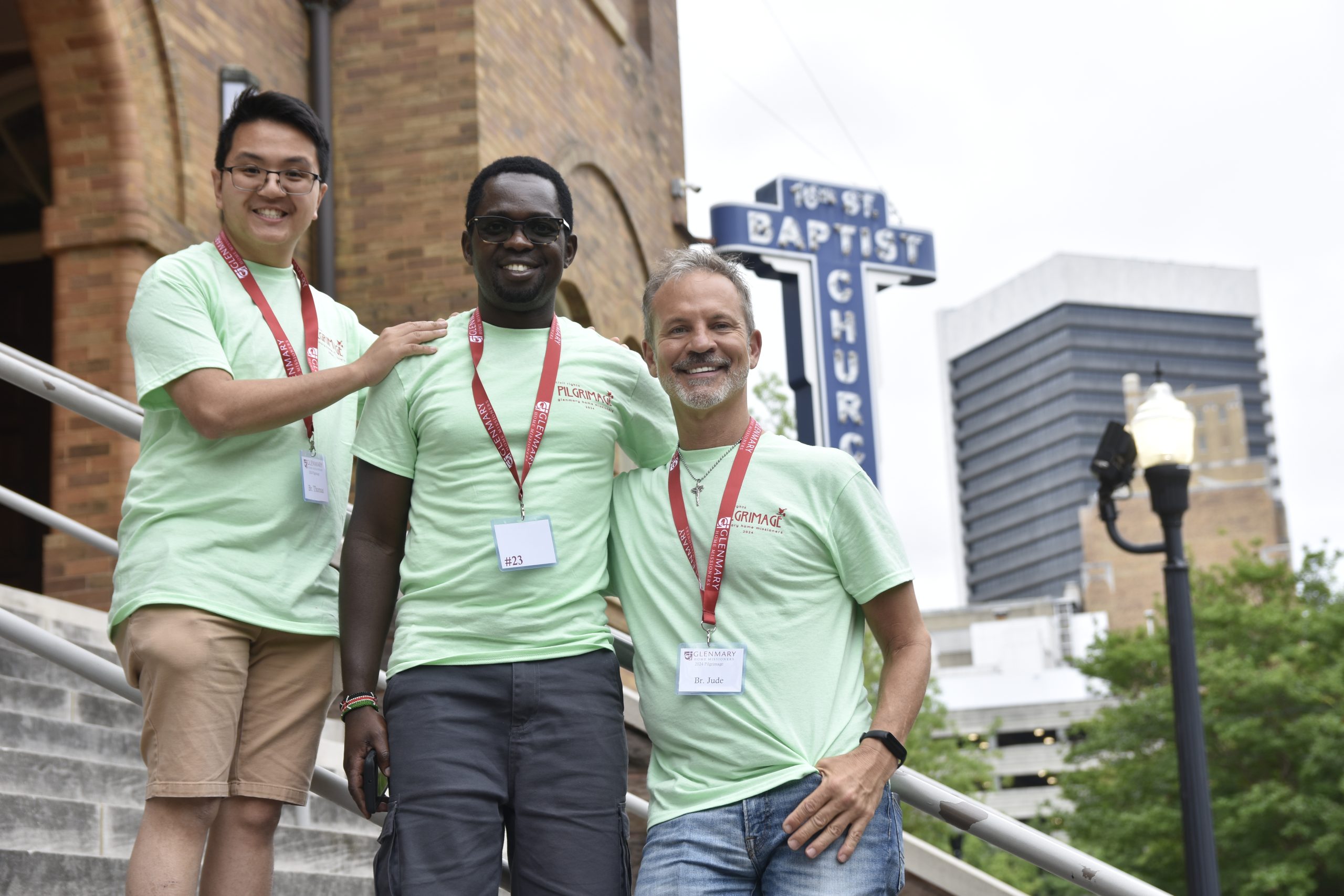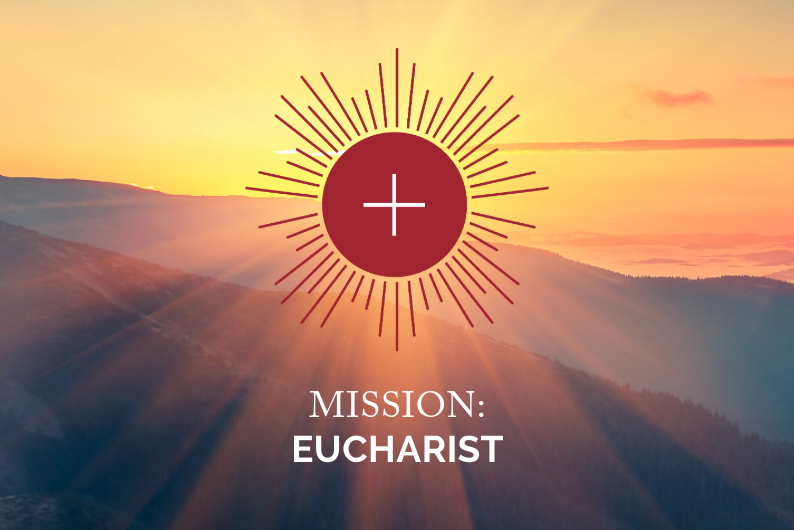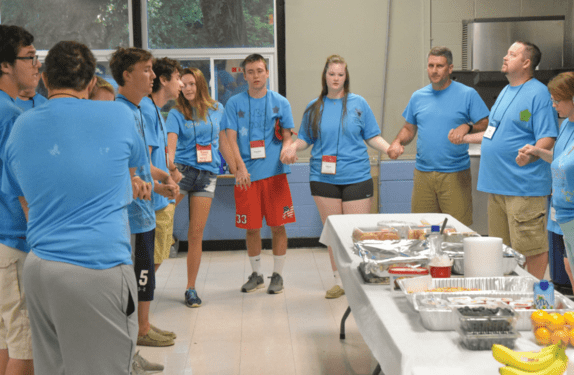The movement for civil rights was forged in the last century, but continues today. A Glenmary group got on a bus and found out how.
This past May, a group of 30 Glenmarians and coworkers met in Birmingham, Alabama, and climbed aboard a pilgrimage bus. But this would not be a typical Catholic pilgrimage. This would be a prayerful encounter with sites of the civil rights movement in the 1950s and 1960s. In Alabama, Mississippi, and Tennessee, these pilgrims would spend time in the places where Christians stood up for their faith, and sometimes were abused, tortured, even martyred for it.
“The point was to have an encounter, an opportunity for the pilgrims to gain a better understanding of the Southern culture,” said Father Dan Dorsey, president of Glenmary, speaking of history that affects ministry in some Glenmary areas. “But the most important thing for me was that the participants had a profoundly spiritual experience, where people see Christ in the experience of others, whether that’s in a museum or in the people who continue to struggle for justice.”
For Glenmary student (now novice) Evarist Mukama, the experience was an eye-opener. “I was struck by the scene where the four girls were killed,” he says, referring to 1963’s bombing victims, young girls, at the 16th St. Baptist Church in Birmingham, Alabama. “They were really innocent. Humanity can be destructive.” He had studied the US civil rights movement as a young student in Kenya. “I thought it happened a long time ago, but it is actually a recent thing, the 1960s. And this struggle for freedom is actually still going on.” Human trafficking is real, today, he observes.
Then and now
There were two parts of the pilgrims’ six-day journey. First was witnessing firsthand the places and commemorations where the sometimes grim, sometimes hopeful events of 60+ years ago took place. That was augmented by time spent with people in today’s struggle for justice.
What better guides for such a pilgrimage than Polly and Danny Duncan Collum? Polly is Glenmary’s director of Justice, Peace and the Integrity of Creation (JPIC). Danny, her husband, is a Greenville Mississippian who grew up during the momentous civil rights events. Many years later, the couple was recruited to start the Glenmary parish in Ripley, Mississippi.
“It was a time of reflection,” says Polly. “But also, it was a connection between the past and the present.” She offers the example of a meeting with Bishop Joseph R. Kopacz and representatives of Working Together Mississippi, a multiracial coalition in Jackson, Mississippi, of which the Diocese of Jackson is a member.
Over dinner in Jackson one evening, the pilgrims heard stories of veteran civil rights organizers and from people who are tackling issues today. “You know, legal segregation is sort of gone,” one of the speakers told the group, for example. “But civic segregation is as deep as it ever has been. I can’t believe that we can’t get expansion Medicaid,” she said, speaking of Mississippi’s rejection of federal funds for improved medical services for the poor.
Other stories, real and immediate, abounded at various evenings during the pilgrimage: an evening at Resurrection Catholic Missions of the South in Montgomery, Alabama, another with leaders of the Greenwood Community Center in Mississippi. Each of those evenings was the conclusion of days going to interpretive centers and memorial sites along the way.
One center told the story of slavery and ended with treatment of today’s mass incarceration of African Americans. Another told the heroic story of Rosa Parks and the Montgomery Bus Boycott. Nearby was Rosa’s bus stop. There was the Kelly Ingram park, in Birmingham, where the nation watched in horror as fire hoses and police dogs were turned on peaceful protestors. Today the park is a site of sculptures interpreting that event.
There was a walk across the Edmund Pettus bridge at Selma, Alabama, site of the “Bloody Sunday” attacks on peaceful protesters by club-wielding mounted police. The pilgrims’ bus stopped at the home of civil rights activist Medgar Evers, slain in his driveway while wife and children waited for him to come through the door; the site where false accusations were made against teenage visitor Emmett Till, who was tortured and murdered for them; the Lorraine Motel in Memphis, Tennessee, where Dr. Martin Luther King Jr., was assassinated. It was a very deep immersion experience.
Stories of hope and challenge
Moses Ndung’u, a Glenmary seminarian from Nakuru, Kenya, says what struck him most was listening to the story of Rosa Parks and to the story of Dr. Martin Luther King Jr., “especially the way he advocated for a peaceful resolution.”
When seminarian candidate Philip Langford saw a museum display of Ku Klux Klan robes, this Texan from a multiethnic family was brought back to a childhood experience. “I actually have a memory of encountering the KKK,” he says, recalling a 2004 cross-country family car trip from Texas to Florida, with a gas stop in Mississippi. “Coming down the road a group of Klansmen were carrying a cross. I remember my mother immediately told me to lie on the floorboard. I was just reminded of all of that today. I can imagine how somebody who went through the civil rights era, with all of the lynchings, would have responded to that cross. The most jarring thing for me was all of the hatred, and I would argue that it’s still there today. And I don’t know if I would say it’s quieter, because it’s getting louder and louder.”
Deacon Joseph Maundu, a Kenyan, summed up the experience for many of the pilgrims: “When you know the history of a place, and then experience things there, you know it’s not about you. It’s about the issue, about what happened there. And you stop your own prejudices. We can sympathize with other people. I think this [pilgrimage] experience will give us a positive approach.”




